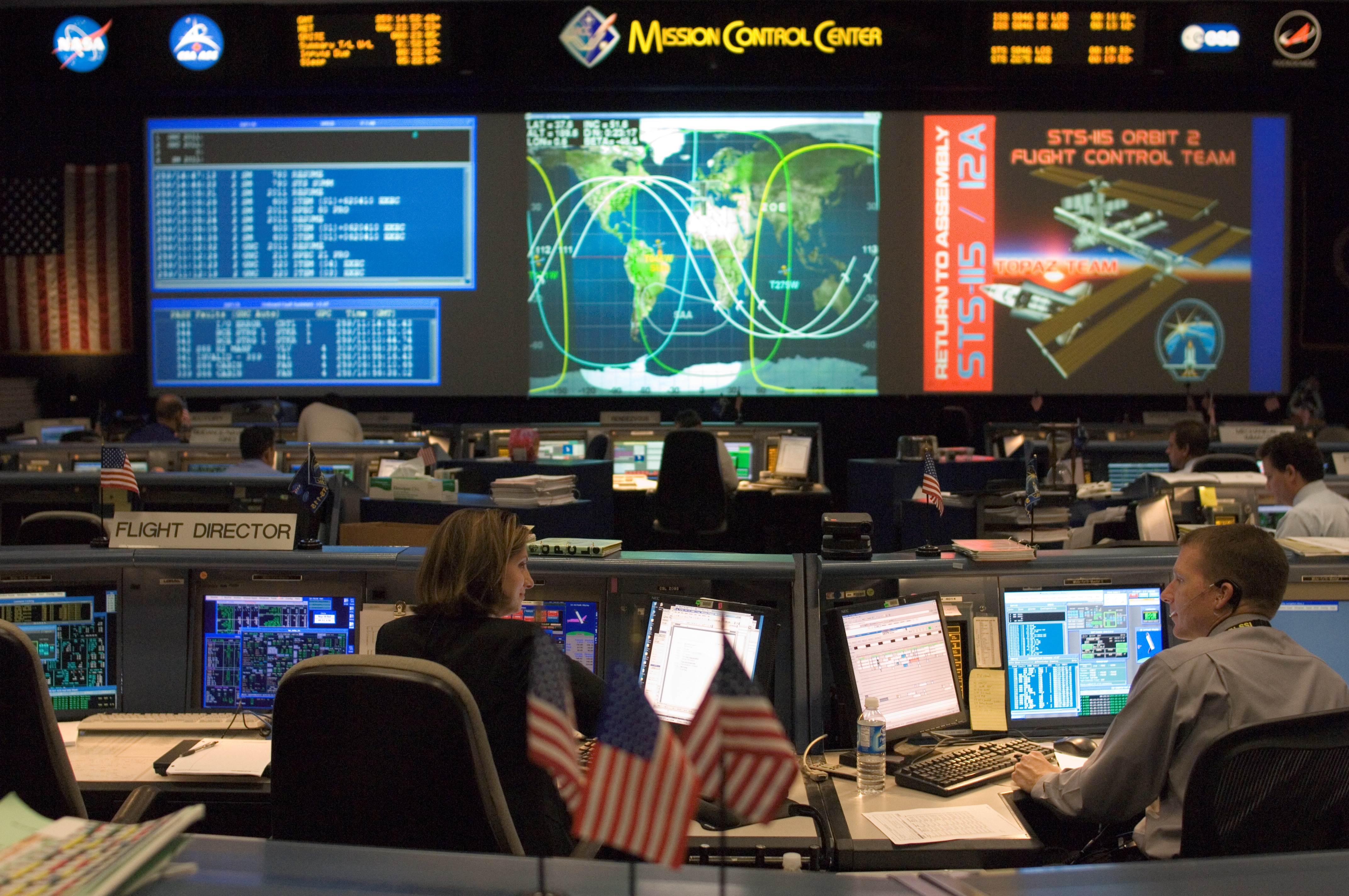This topic has generated so much feedback, from comments, forum posts, to a new section on Atomic Rockets, that I feel it deserves more discussion. Besides, it's fun.
First off, allow me to apologize; I may not have been as clear as I should have as to how the Mission Control model would work in practice. Also, I know many RocketFans out there are curious as to how this model can be applied to smaller spacecraft, such as the kind PCs in a role-playing game would actually crew. Lastly, I wanted to address how this model may work out in command-and-control craft, such as the Heinlein rocket, during space combat.
To begin, let's look at the crew of our friend, the Missile Craft. Just to recap, the Missile craft is an interplanetary vehicle (IPV) that has enough delta-v to travel one AU or thereabouts and still be able to stop at their destination. They usually travel on year-long patrol routes, carry a crew of about 80, and can be considered a Flotilla-level asset for those who vote Navy and a a Group-level asset for those who prefer Air Force. All this means as far as out crew model is concerned is that there will always an MCOM billet on a Missile Craft.
As mentioned in our first post on this topic, There are five departments in Mission Control: Command, COMAST, Engineering, Life-Support, and Payload. Each department has three staff positions. Since there are two full Mission Control teams assigned to an IPV, for redundancy and safety, this gives us six staffers per department. Each member of the Mission Control team will be qualified to stand watch for their entire department under normal operations, which means that the normal crew per watch is five. This is similar to the way that flight control for the ISS is handled at NASA; only eight staffers are on duty during low priority times.
This gives a Watch bill of six four-hour shifts. Each member of the Command Department functions as Flight Director for their Watch, though only the two Flight Commanders are referred to as "Flight". The INCO is the de facto Executive/1st Officer of an IPV, and the Chief is the de facto 2nd Officer. The Witch bill is staggared as well, with Flight 1 directing the first Watch and Flight 2 directing the 4th.
After their 4 hour Watch is up (or before, I'm not picky) each crew member has an additional four to eight hours of work to do in their specialty. This can mean a lot of things, but with the technology available, it will mostly be supervising a lot of robots and performing spot inspections. The most important part of a crew member's job - indeed, the entire reason for having an organic crew at all - is to spot potential problems before they happen. Space is an uncaring mistress, many problems are lethal and impossible to fix by the time they actually occur. The two Flights have the task of not only handling the details of their respective commands but also being on the planning staff of the MCOM, along with the Flight Commanders of any auxiliary craft and the commanders of the Espatier attachments.
Under combat conditions, both Flight Control Rooms are fully crewed. The FCR used by the MCOM is the primary control room; the second FCR , home of the Deputy MCOM and Flight 2, is on standby to assume control immediately in case of loss of FCR-1. "Loss" can mean anything from communications breakdown to explosive decompression. In order to keep both Mission Control teams honed and in fighting trim, they will routinely conduct wargames against one another in real-time via virtual reality and telepresence. MCOMs and Flights will also conduct surprise inspections, drills and other nasty tricks to avoid the lethal complacency that can cripple a crew on the long, monotonous orbits between worlds. One such trick will be an "Honor FCR" competition; the most efficient, alert, and combat effective FCR team will have the honor of hosting the MCOM for whatever period of time there is between competitions. I imagine they get first dibs on liberty and fresh provisions as well. Whatever it takes to keep them motivated.
This has become a pretty lengthy post already; therefore I hereby decree that I will address the there two topics I mentioned, small spacecraft control and C-and-C spacecraft, in their own posts. Don't worry, RocketFans, I will be posting on this topic daily until Wednesday at least.
One last note: I am soliciting comments and suggestions on the Character Sheet until Friday; the PDF will go live over the weekend. I've already gotten some awsome suggestions and made a few changes, so please, if you have any thoughts at all on the subject, share them.
See you tomorrow, RocketFans!


Totally awesome set of articles! I'm working on a more operatic setting myself (have been for the last decade) and have made some changes based on your article here. Excellent work!
ReplyDelete